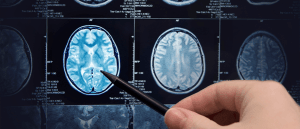Could AI algorithms provide a cure for epilepsy?

A recent study highlights the impact of an AI algorithm in detecting abnormal brain tissue commonly associated with drug-resistant epilepsy.
While the majority of epileptic seizures are prevented through medication, 20–30% of epilepsy cases are drug-resistant, and individuals will therefore not respond to medication. A recent study led by University College London (UCL; UK) highlighted a new artificial intelligence (AI) algorithm capable of diagnosing cases of focal cortical dysplasia (FCD), abnormal brain areas that commonly precede the development of epilepsy. FCDs can be treated by surgery, eliminating their ability to promote drug-resistant epilepsy; however, identifying these abnormal brain areas using an MRI scan has proved difficult. This study provides evidence for a more sensitive diagnostic tool.
The Multicentre Epilepsy Lesion Detection (MELD) project allowed the research team to develop AI algorithms by utilizing MRI scans from more than 1000 patients. The team used roughly 300,000 brain locations to quantify thickness and level of folding seen at the surface of the brain. Healthy and FCD scans were used to train the algorithm to distinguish between these two scan types based on the quantified cortical features previously established.
Out of a cohort of 538 individuals, the findings published in Brain revealed that the algorithm was able to detect FCD in 67% of the scans. This included a proportion of cases who had previously been diagnosed as FCD negative from an MRI scan alone. The MELD algorithm allowed for 63% of the 178 MRI-negative individuals to be reclassified.
 One scan is all it takes: diagnosing Alzheimer’s disease
One scan is all it takes: diagnosing Alzheimer’s disease
Alzheimer’s Disease Diagnosis could be achieved using a single brain scan and a predictive modeling algorithm.
Co-first author Hannah Spitzer, researcher at Helmholtz Munich (Germany) commented, “Our algorithm automatically learns to detect MRI lesions from thousands of MRI scans of patients. It can reliably detect lesions of different types, shapes and sizes.” The findings of the study show that the MELD algorithm is able to detect all types of FCD as well as increase the sensitivity of FCD detection.
Co-senior author Konrad Wagstyl (UCL Queen Square Institute of Neurology) suggested that “this algorithm could help to find more of these hidden lesions in children and adults with epilepsy and enable more patients with epilepsy to be considered for brain surgery that could cure the epilepsy and improve their cognitive development. Roughly 440 children per year could benefit from epilepsy surgery in England.”
As FCD is the most common cause of epilepsy in children who have previously undergone surgery and is also the third most common cause in adults, the development of this algorithm has the potential to cure and even prevent the development of many cases of epilepsy in individuals of all ages.